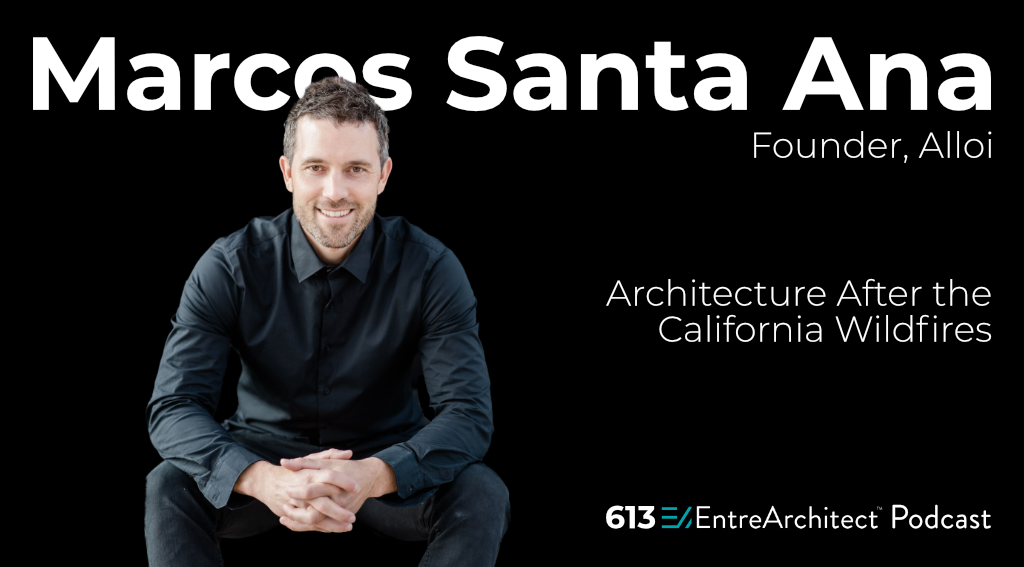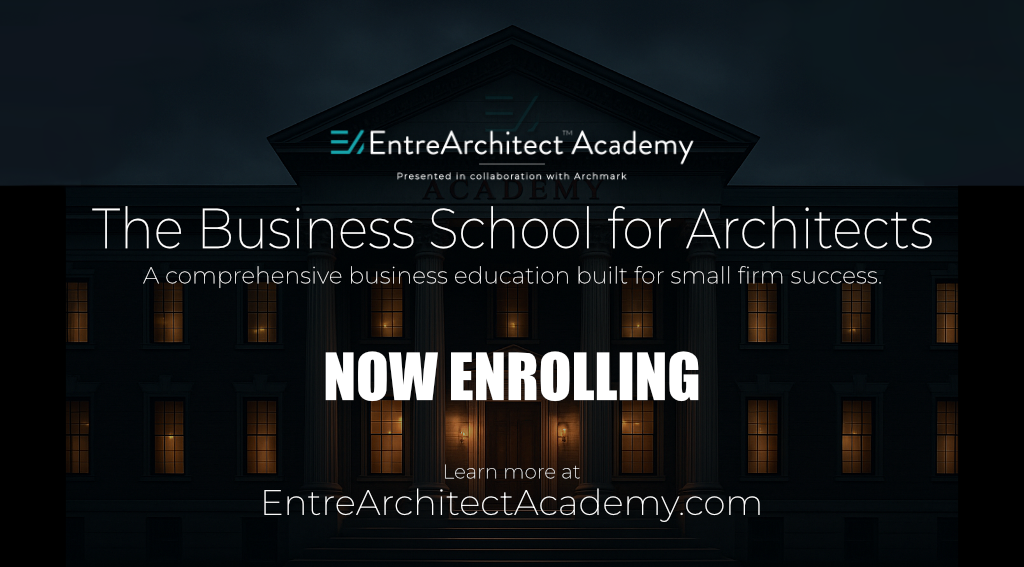
How Alloi is Reimagining Design and Construction for Wildfire Zones in Southern California
My recent conversation with Marcos Santa Ana, founder of Alloi in Los Angeles, was both inspiring and deeply relevant to the future of residential architecture. In a time when wildfires are no longer seasonal surprises but annual threats, Marcos is building homes that don’t just look beautiful or function efficiently—he’s building homes that stand a fighting chance against the growing force of nature.
And he’s doing it all with intentionality, cultural sensitivity, and a holistic design-build process rooted in respect for both the land and the people who live on it.
If you’re interested in what it really looks like to blend construction, architecture, sustainability, and safety in wildfire-prone areas, this is a conversation you don’t want to miss. Listen to the full episode at https://entrearchitect.com/613.
From Framing to Philosophy
Like so many architects I know, Marcos’s story starts with plywood, a set of blueprints, and a little childhood awe. He watched his family’s home being remodeled, played hide and seek in the framing, and soaked up every second of the transformation. That moment stayed with him. It also led him to pursue both architecture and the trades—earning a contractor’s license even before his architecture license.
This dual path would become foundational for Alloi’s integrated design-build practice.
What struck me most was Marcos’s grounded philosophy: architecture isn’t just about vision; it’s about execution. “We create the instruction manual,” he said. “But if we don’t know how the building is actually built, how can we make sure it’s done right?” That mindset—bridging the gap between architect and builder—shapes everything Alloi does.
The Power of Global Perspective
Marcos’s design voice is shaped by a multicultural journey. From urban sketching in Barcelona to landscape design in Denmark, he absorbed lessons in place-making and people-centric design that now live in his Southern California projects.
That time in Europe sparked two key revelations for him: one from nature, the other from architecture. Standing in the Pantheon, watching light pour through the oculus, he realized the power of light and material to transform space. Later, surrounded by the raw grandeur of the Alps in Chamonix, he understood how deeply nature informs human perception of form and scale.
The synthesis of those moments—structure and soul—is what now defines his work.
A Business Born in Crisis
When the Great Recession hit in 2008, Marcos found himself at a crossroads. He had been on a path to take over a partner’s architecture firm in LA, but the downturn accelerated a shift. He launched Alloi in survival mode—but with clarity.
He didn’t just want to run a firm. He wanted to build something integrated and intentional: a design-build practice grounded in performance, wellness, and resilience. And that meant rethinking how homes were conceived, not just how they looked.
In the early years, Alloi focused on architecture. But by year three, they started offering construction services too—starting small, building up—and eventually taking on fully integrated projects. One notable example is the Zen Modern Home, a ground-up project where Alloi acted as both architect and general contractor.
Designing Against Disaster
Wildfires have changed everything.
During the Palisades fire, a project Marcos’s team was building came dangerously close to destruction. The house—under construction and not yet fully sealed—was spared, but just barely. It was enough to spark a total reevaluation of what it means to design and build in Los Angeles.
Rather than rebuild the same way, Marcos began designing homes with layered fire suppression systems. We’re talking about high-tech exterior sprinklers that monitor fire mapping apps in real time, rooftop foam-emitting emitters, underground water storage tanks, and solar-powered backup systems that shift from municipal supply to propane if needed.
It’s not just fire-resistant design. It’s a full-blown resilience strategy.
And it’s not cheap. But as Marcos explained, “It’s about reducing the fuel load, slowing the heat, and buying time—just enough time for the house to survive.”
What Does Fire Resilient Architecture Look Like?
In his view, it starts with non-combustible materials. That might mean metal stud framing or, ideally, concrete structures. He’s particularly interested in micro-rebar concrete—where tiny steel filaments are mixed into the concrete for additional strength and resilience. Not only does this improve structural integrity, it reduces the need for traditional rebar and performs better under extreme heat.
He’s also eliminating vulnerable attic and crawlspace ventilation. No more ember entry points. And in many cases, Alloi is tying in pool systems and backup tanks to support independent exterior sprinkler systems in the event of power or utility shutdowns.
This is high-performance architecture, not just for energy efficiency—but for survival.
Beyond Fire: Passive House and Human-Centered Design
Marcos isn’t just building bunkers. He’s designing beautiful, sustainable homes rooted in Passive House principles and Japanese-inspired design.
Feng shui plays a quiet, foundational role in his work—not as a trend, but as a philosophy. “There’s a spiritual side and a practical side,” he said. “Even if you don’t believe in the energy, the principles still result in good architecture.” Think alignment with nature, careful orientation, clear circulation, and seamless indoor-outdoor transitions. “Architectural harmony,” as he calls it.
That harmony isn’t just aesthetic. It’s functional. It leads to quieter, healthier, more thoughtful buildings—spaces that perform just as well emotionally as they do technically.
A New Studio, A New Chapter
Alloi recently purchased a commercial warehouse that will serve as its new studio—a dream years in the making. And it’s not just about having a cool space. It’s about walking the walk. The new Alloi headquarters will be a showcase for fire-resilient, passive house-inspired design: high-performance ventilation, advanced acoustics, and an indoor environment that mirrors their values.
It’s a chance to model what’s possible—for clients, team members, and the broader profession.
What’s Next for Alloi?
By 2030, Marcos hopes to triple his team from 10 to 30—carefully and intentionally. Not growth for growth’s sake, but growth in alignment with their mission.
They’ll continue focusing on architecture-led design-build, prioritizing contemporary homes and healthy environments. And with more fire rebuilds on the horizon, they’re leading by example—educating clients, collaborating with other architects, and always questioning what “enough” really looks like when it comes to resilience.
If there’s one lesson from this conversation, it’s that architecture must evolve. The world is changing, and our work must meet the moment.
And it starts with us. With our understanding of the trades. With our knowledge of building systems. With our ability to communicate across disciplines. And ultimately, with our courage to lead.
Listen to the full episode and hear Marcos’s full story at https://entrearchitect.com/613.
You’ll walk away with a new perspective on what it really means to build better.

Leave a Reply